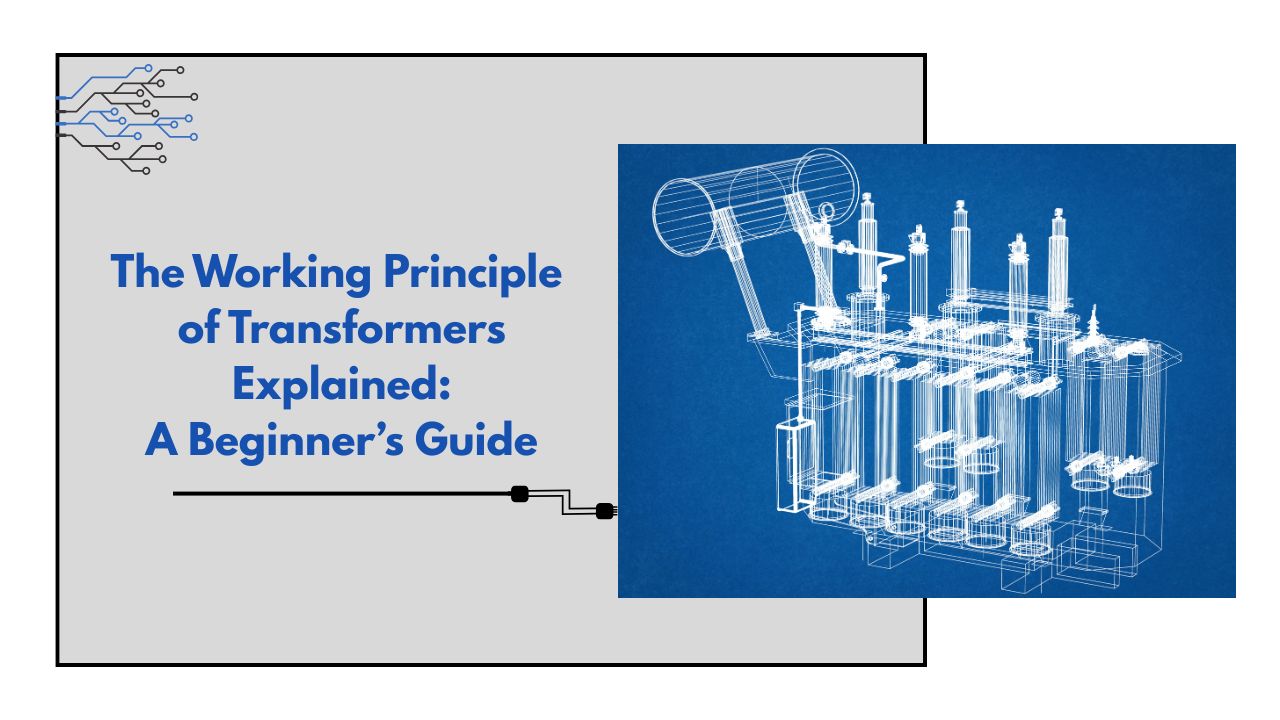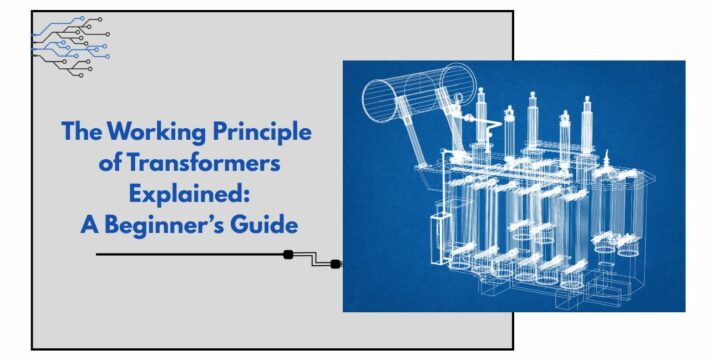
Consider electricity as water that travels through an extensive network of pipes, requiring precise pressure to reach your home efficiently. Transformers play a crucial role in regulating the power system’s pressure to ensure the reliability and safety of power lines through your outlet. By stepping up or down the voltage using electromagnetic induction, they ensure that power travels far distances with minimal loss and is ready to use.
Enter Volta Transformers, a top manufacturer located in Vadodara, India, with more than 15 years of expertise and 500+ customers in the industries and utilities, as well as renewable energy. ISO 9001:2015 certified, Volta delivers high-quality transformers that power India’s growing energy needs.
In this beginner’s guide, we’ll explain the working principle of transformers, how they function, the main elements, seven of the most popular varieties in Volta’s lineup, and the reason they’re an energy source in the 2025 energy revolution.
What is a transformer, and its operation mechanism?
A transformer is like a magic box that adjusts the strength without moving a single part. Technically, it’s a static device that transfers alternating current (AC) power between circuits by changing voltage levels—either boosting (stepping up) or reducing (stepping down)—while keeping the frequency (e.g., 50 Hz in India) constant.
Think of it as a water valve, tweaking pressure to suit different pipes. Transformers are vital for power systems: they step up voltage (e.g., from 11 kV to 66 kV) for long-distance transmission, slashing energy losses, and step down voltage (e.g., to 230 V) for safe use in homes, offices, or factories.
So, how does this magic happen? It’s all about electromagnetic induction.
Pumping AC into a single coil (the primary) creates an oscillating magnetic field. The magnetic field generates the new voltage by cutting the steel core to create another coil. We label this layer as the secondary. The number of wire loops in each coil decides if the voltage goes up or down—more loops in the secondary means higher voltage, fewer means lower. This process is super efficient, losing only 1–5% of energy.
Volta Transformers, based in Vadodara, crafts power transformers with 95–99% efficiency, meeting Indian standards (IS 1180, IS 2026). In 2025, their transformers will power India’s grid, supporting EVs, data centers, and renewables amid a global transformer shortage with wait times up to three years.
Core Components of a Transformer
To understand a power transformer, picture it as a simple machine with a few key parts working in harmony, like a band jamming a perfect tune. Here’s what’s inside:
Magnetic Core: Made of weak, bonded silicon steel sheets stacked like a deck of cards, the heart was delicate. It channels the magnetic field from one coil to another, with laminations cutting down on “eddy current” losses (unwanted heat).
Primary and Secondary Coils: These are insulated copper or aluminum wires wrapped around the core, like threads on a spool. The main takes in AC, generating a magnetic field; the secondary captures that field to provide a fresh voltage.
Insulation: Acting as an ally, oil (in oil-filled power transformers) or epoxy resin (in dry-type transformers) ensures safety by stopping electrical sparks. Oil also cools heated components.
Enclosure: A protective metal tank or housing shields the insides, often with cooling fins for oil-filled units to dissipate heat.
Bushings: In high-voltage power transformers, these insulated connectors link coils to power lines, like plugs, ensuring safe electricity flow.
Together, these components effectively use electromagnetic induction to move power. In their transformers (up to 25 MVA, 66 kV class), Volta Transformers make use of premium materials—low-loss cores, high-quality windings, and sturdy insulation. Their in-house testing in Vadodara ensures every unit is durable and performs flawlessly, powering everything from substations to hospitals in 2025’s demanding energy landscape.
The Working Principle of Transformers
Let’s break down the working principle of transformers, step by step, like a recipe for your favorite dish. The secret sauce is electromagnetic induction, discovered by Michael Faraday, which lets power transformers shift voltage without moving parts. Here’s the process:
AC Enters the Primary Coil: Insulated wires wrapped around an iron core allow Alternating Current (AC) to enter the main coil. In India, AC undergoes 50 directional changes per minute, resulting in a constantly shifting magnetic field akin to an oscillating magnet.
Core Channels the Magic: Designed like a bridge, the laminated silicon steel magnetic core guides this undulating field to the secondary coil. Laminations keep energy loss low by reducing heat from stray currents.
Induction Sparks Voltage: The changing magnetic field hits the secondary coil, inducing a new voltage, thanks to Faraday’s Law. No wires connect the coils—energy jumps via the magnetic field, keeping circuits safe and separate.
Voltage Gets a Makeover: Turns ratio determines the voltage change. If the secondary coil has more wire loops (e.g., 1000 vs. 100), the voltage steps up (e.g., 11 kV to 110 kV). Fewer loops (e.g., 100 vs. 1000) step it down (e.g., 11 kV to 1.1 kV). See it like a seesaw balancing energy.
Power Reaches the Load: The secondary coil transmits the generated voltage to the power lines, homes, or machines. Insulating (oil or resin) support to prevent sparks, while cooling (oil radiators or air) helps keep things cool.
They only work with AC, as DC’s steady flow can’t create a changing field. Energy stays nearly constant, losing just 1–5% to heat or magnetic inefficiencies, hitting 95–99% efficiency.
Volta excels in this, using top-quality cores and windings to make their products more efficient. From the solar fields of Gujarat to Kolkata’s factories, which are tested by IS 1180 as well as IS 2026 standards, their gear drives India’s grid for 2025 despite the global shortage.
7 Types of Transformers at Volta Transformers
Volta Transformers offers a wide range of solutions, each optimized for specific energy needs, all powered by electromagnetic induction, which is the working principle of transformers. Here are the seven major types:
Power Transformers: These oil-filled giants (up to 25 MVA, 66 kV) step up voltage for long-distance transmission or step down for industrial grids. Found in substations, they’re 98–99% efficient, with oil cooling and tap changers for voltage tweaks. They power India’s 2025 grid, from solar plants to steel mills.
Distribution Transformers: Oil-filled units (11 kV to 230 V) bring safe power to homes and businesses. Pole- or pad-mounted, they hit 95–98% efficiency and handle variable loads, vital for India’s urban and rural electrification push.
Solar/Wind Inverter Duty Transformers: Oil-filled (up to 33 kV), these handle the choppy outputs of solar panels or wind turbines, stepping up voltage for grid connection. With 95% to 97% efficiency, they will help the renewable growth of India in 2025 with a goal of 500 GW by 2030.
Furnace Transformers: Oil-filled, high-current units power electric furnaces in steel or chemical plants. They step down to low voltages (e.g., 500 V), with robust cooling for 90–95% efficiency under intense loads, driving India’s industrial growth.
Dry-Type Transformers: Resin-insulated (up to 33 kV) are fire-safe for indoor use, like hospitals or data centers. At 90–95% efficiency, they’re eco-friendly and low-maintenance, perfect for 2025’s smart buildings.
Hermetically Sealed Transformers: Oil-filled, low-maintenance units with sealed tanks for harsh environments (e.g., coastal areas). They step down voltage (e.g., 11 kV to 230 V) at 95–98% efficiency, ideal for India’s rural grids.
Isolation Transformers: Typically dry-type, these units provide electrical separation for sensitive devices, including medical equipment, with a 1:1 voltage ratio. With 90-95% efficiency, they guarantee security and clean power for the 2025-era tech-driven world.
Volta customises these to IS/IEC standards, supporting India’s renewable and electrification goals with reliable, efficient designs.
Why Volta Transformers Rocks?
Volta Transformers is a powerhouse in India’s energy scene, and here’s why they shine: Their versatile portfolio spans power, renewable, and industrial transformers, meeting every need. ISO 9001:2015-certified, their Vadodara facility tests units (up to 25 MVA, 66 kV) for top reliability. With 95–99% efficiency, their low-loss cores and windings save energy.
Solar/wind power transformers fuel India’s 2025 renewable push, while local manufacturing tackles the 3-year global transformer shortage, serving 500+ clients. Eco-friendly dry-type and hermetically sealed units cut environmental impact, and 24/7 support ensures uptime. Volta is a trusted leader in India’s energy future due to its innovative and superior products.
Final Words
Transformers are the quiet heroes of our power systems, and this guide has shown how they work their magic through electromagnetic induction, leveraging the working principle of transformers to deliver electricity efficiently and safely. From cores to coils, Volta Transformers crafts high-quality solutions that light up homes, industries, and renewable projects.
By 2025, the Volta’s invention will be the catalyst for India’s energy revolution, solving the world’s transformer shortage and helping to improve sustainable development. Are you prepared to harness their expertise? Contact Volta Transformers today for cutting-edge solutions from Vadodara, where power meets precision.


Leave a Comment